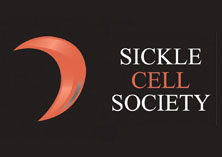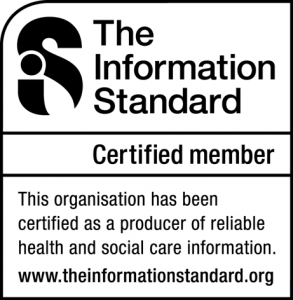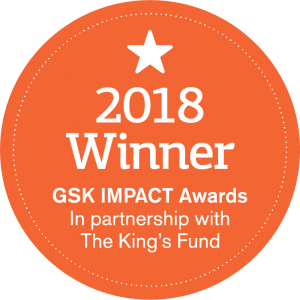This Valentine’s Did You Find Your Type?
By Iyamide Thomas, NHS Engagement Lead (Screening), Sickle Cell Society UK
We celebrated Valentine’s Day about five weeks ago. Did you know it is reportedly the most celebrated day around the world besides New Year? Saint Valentine’s Day is apparently named after a saint called Valentinus who it is said was imprisoned for performing weddings on soldiers forbidden to marry and for ministering to Christians who were persecuted under the Roman Empire. Legend has it that he healed the daughter of his jailer and before his execution he wrote “from your Valentine” as a farewell to her! By the 15th Century, 14 February had become associated with romance and the tradition of courtly love and had pretty much evolved to what happens now – an occasion when couples (current or would-be!) express their love by presenting each other with flowers, chocolates, romantic gestures and cards known as ‘valentines’.
Why Care about Type?
From the type of people we might have been attracted to this past Valentine’s Day to the way we look and behave, there’s a lot we inherit from our parents through genes, including our haemoglobin genotype. This tells you the two genes (i.e. codes) – one inherited from each parent – that determine your type of blood haemoglobin. Haemoglobin is the substance in your blood that gives blood its red colour and carries oxygen around your body. The type of haemoglobin genes you inherit or pass on can play an important role in determining whether you or your children are affected by two serious inherited blood conditions – sickle cell disease and thalassaemia.
Sickle cell disease is a serious inherited blood condition that can cause severe pain, anaemia and organ damage. It mainly affects people who originate from Africa, the Caribbean, Asia, the Middle East and the Mediterranean. However, sickle cell is not a ‘Black’ disease and can affect ‘White’ people too, though less frequently. The reason sickle cell is more common amongst the ethnicities described above is because the sickle cell gene was a mutation to protect against malaria and being a ‘carrier’ of one copy of the gene (also known as being ‘trait’) offered some protection. People with the trait survived malaria and could have children with other survivors, thus making sickle cell prevalent in areas that had malaria. Thus, it is not a condition people should feel stigma about. Also, please remember trait or not, everyone should protect themselves when in malaria areas of the world!
Out of the 15 million people estimated to have sickle cell disease worldwide, around 10 million live in Africa of which approximately 4 million are in Nigeria. In the UK, an estimated 15,000 people have sickle cell disease and in 2019/20, 262 new babies were born with sickle cell and 8247 were ‘carriers’ or ‘trait’ (Data from NHS Sickle Cell and Thalassaemia Screening Programme Data Report 2019/20).
Thalassaemia is a condition most common among people originating from India, Pakistan, Bangladesh, Cyprus and China. People can inherit Beta Thalassaemia major which affects their ability to produce enough red blood cells. This causes severe anaemia and organ damage and they need to be on regular blood transfusions throughout life.
The usual and most common type of haemoglobin gene people inherit is Haemoglobin A. Unusual haemoglobin genes include Haemoglobin S (known as ‘sickle haemoglobin’), Haemoglobin C and beta thalassaemia. People can only get sickle cell or thalassaemia if they inherit two unusual genes for haemoglobin, one from each parent. In the UK 1 in 4 West Africans are sickle cell ‘trait’.
Post Valentine’s be the perfect partner!
On 14 February 2023, many people will have established new relationships or progressed further with old ones. Particularly for young couples who have not yet had children, now might be the right time to raise awareness of these two inherited blood conditions so individuals can consider finding out their ‘haemoglobin genotype’, as each time two people with trait have a baby there is a 25% chance the baby could be born with sickle cell disease or thalassaemia. A simple blood test will determine if you carry a gene for sickle cell or thalassaemia and tell you your haemoglobin genotype. For someone with sickle cell anaemia this will be ‘SS’ and for someone with sickle cell trait this is ‘AS’. However, if people inherit the other unusual haemoglobin genes they will have other types of sickle cell disease apart from sickle cell anaemia, such as ‘SC Disease’ (common amongst Ghanaians) and ‘sickle-beta thalassaemia’.
There is an NHS Sickle Cell and Thalassaema (antenatal and newborn) Screening Programme which offers all pregnant women a screening blood test which is then offered to the father-to-be if the woman is found to be a carrier. The Programme also screens newborn babies for sickle cell. In England only 60% of men are currently accepting their invitation for sickle cell screening and so more men need to step up! If the father-to-be also carries the sickle cell gene then the ‘at-risk’ couple is given all the information that enables them to make an informed choice about the pregnancy. If you are already a couple and you know that you both carry one of the genes for sickle cell or thalassaemia then you should present to your GP early in your pregnancy or contact maternity services or your nearest NHS Sickle Cell and Thalassaemia specialist counselling services directly. You should also tell healthcare professionals if you want counselling and prenatal diagnosis (tests to see if the unborn baby has the condition) and not assume that all healthcare professionals will know what you want!

Preconception Testing
Testing for your haemoglobin genotype before pregnancy is called ‘preconception testing’. You can ask your GP for this blood test before you and your partner decide to start a family and especially if you know other family members who are carriers or who have sickle cell. You and your ‘Valentine’ can then discuss any risks and the choices that are right for you! Recent discussions the Sickle Cell Society has had with students and young adults who have not yet had children indicate that there is now more awareness of sickle cell and that many are keen to find out their genotype before starting relationships. They are also keen to know options available to ‘at-risk’ couples. The Sickle Cell Society and UK Thalassaemia Society do a lot of outreach to educate the general public about sickle cell and thalassaemia as more awareness will also help to remove the stigma associated with these two conditions. The Societies are also planning to do even more preconception outreach so those planning children will be well informed.
 Now the valentine cards, chocolates and flowers are over why not learn more about sickle cell disease and thalassaemia so you can make informed choices (about testing) if and when the need arises? By so doing, you just might be considered that perfect partner after all!
Now the valentine cards, chocolates and flowers are over why not learn more about sickle cell disease and thalassaemia so you can make informed choices (about testing) if and when the need arises? By so doing, you just might be considered that perfect partner after all!
Below are websites with lots of information to help you:
Sickle Cell Society
Email: info@sicklecellsociety.org
UK Thalassaemia Society
Email: office@ukts.org





